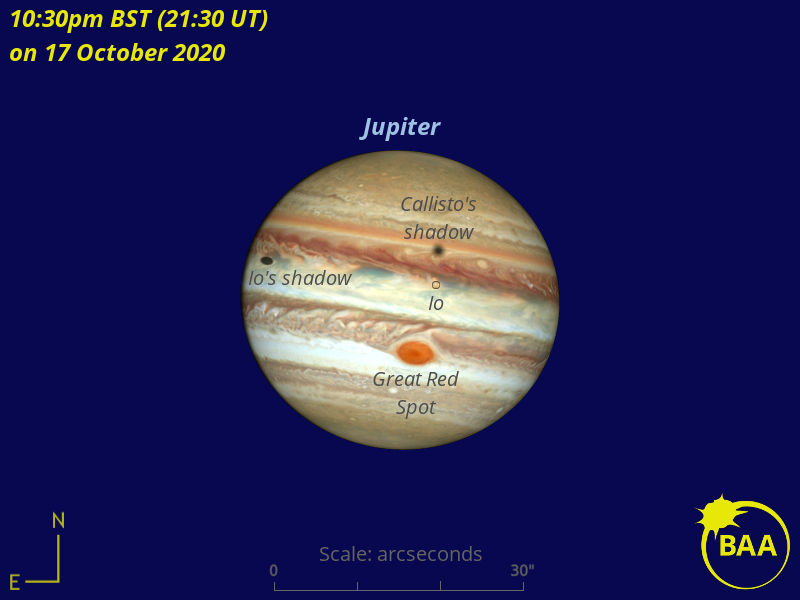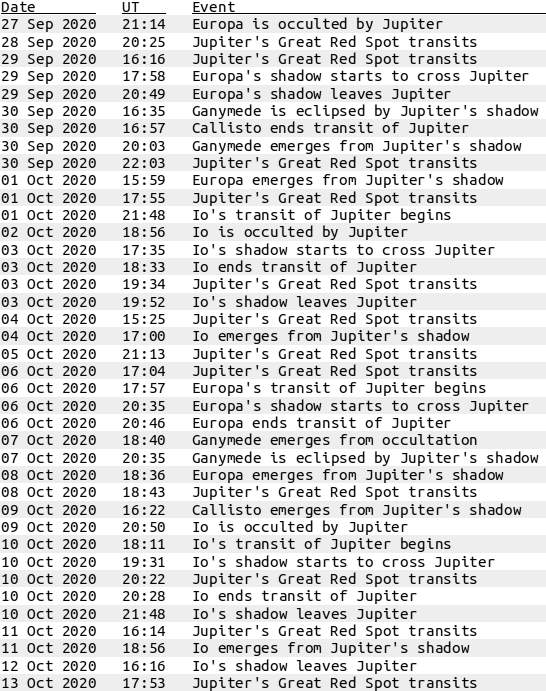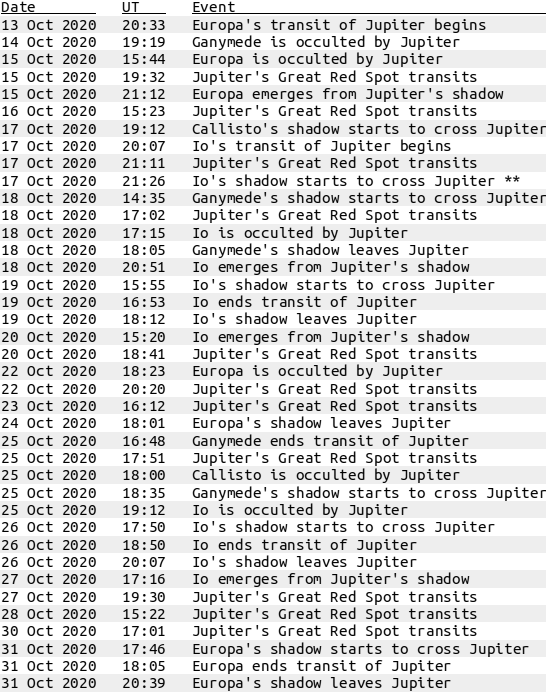2020 September 27
A compendium of Jovian events throughout October 2020

The Solar System’s largest planet is starting to lose some observing ground after reaching opposition on July 14. Fortunately, there are several Jovian events to view throughout October despite the planet’s low altitude in Sagittarius. As viewed from the heart of the British Isles, Jupiter is highest in the southern sky around 7:45pm BST in nautical twilight at the beginning of October, but by the end of the month it’s transiting at 5pm GMT in bright civil twilight.
Jupiter is also getting further away from us — 728 million kilometres (452 million miles) at the start of October, 798 million kilometres (496 million miles) by the end of the month — but the planet’s still big and bright in backyard telescopes. Jupiter’s disc spans 40.5 arcseconds on October 1, diminishing to 36.9 arcseconds by month end. Hence a telescope magnifying 50x will still make it appear larger than our Moon to the naked eye.
Transits and shadow transits of Jupiter’s moons
You can always rely on regular phenomena of the four main Galilean moons — Io, Europa, Ganymede and Callisto. As they orbit their parent planet we can see them pass in front of Jupiter (a transit, easier to see when the moon crosses a Jovian cloud feature of contrasting colour), or observe their shadows cast upon the planet (a shadow transit). Since Jupiter has past opposition, transits of the moons precede their shadow transits. Events visible from the British Isles are tabulated below.
Jupiter’s Great Red Spot (GRS)
Jupiter’s most enduring weather feature is an anticyclonic storm south of the planet’s equator that’s raged for at least the last 400 years. The tables below also include all GRS transits — when it’s best seen, crossing an imaginary line drawn between Jupiter’s north and south poles — visible from the U.K.
A note about time
The tables below use 24-hour Universal Time (UT) throughout, so don’t forget to add one hour to convert to British Summer Time (BST) until daylight savings ends at 2am BST on October 25.
For further information during the current apparition, visit the Jupiter Section.


| The British Astronomical Association supports amateur astronomers around the UK and the rest of the world. Find out more about the BAA or join us. |
